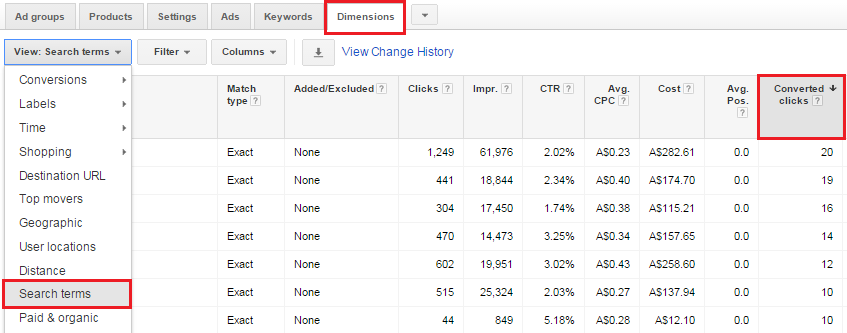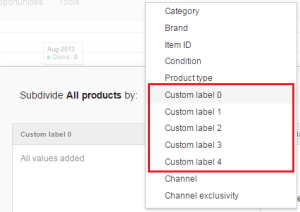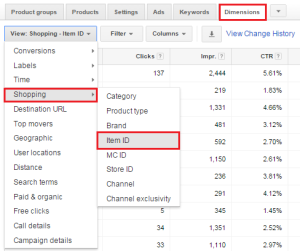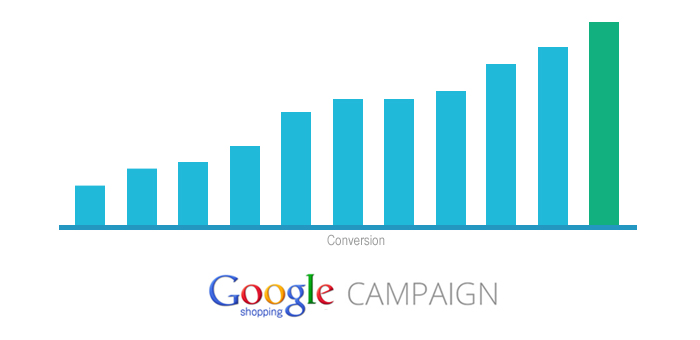Advanced Google Shopping Optimization Tactics
New to Google Shopping?
Google shopping ads are different from conventional search ads since you’re bidding on products, not keywords. It is possible to have multiple products in your feed show in the same auction, so active campaign management is vital for any campaign.
For us, Google Shopping Ads are now a must for every E-commerce store. The shopping campaigns that we manage enjoy a lower Cost per click compared to other search and display campaigns with a high volume of conversions which makes up at least 45% of the total conversions in the entire account, if set up correctly. If you’re an E-commerce site and not in Google shopping, you are definitely missing out. Setting them up is not easy however, and building a great feed and organizing your ad groups will take time.
Most of the proper feed management and optimization tactics have been covered in other articles out there, but I would like to share some of the things that I do to help our shopping campaigns stay competitive and to keep costs low.
Feeds
Optimize Product Feeds Based on Dimensions > Search Terms
Once you get the basics down in building quality feeds and proper feed management, you can consider optimizing your feeds for more conversion opportunities. Shopping ads are triggered using search queries and you can view search queries statistics in the Dimension Tab in Adwords > Search Terms.

In this view, filter out your top converting keyword phrases, find common denominator words (“for sale”, “in bulk”, “buy”, etc) and add them in the description section on matching products in your feeds. Make sure that you don’t keyword stuff. Forced repetition can harm your placement rather than improve it.
Organize product groups strategically using custom labels or create separate feeds
It’s good practice to set up your product groups to reflect your current website category structure, so that you can easily navigate through your campaigns. With this in mind, you’ll probably want to use custom labels in your feeds, since it’s hard to match the default product attributes that Google provides with your current website structure. You can set up up to 5 tiers of categories since you can specify at least 5 custom labels in your feeds.

But from what I’ve observed, E-commerce category structures don’t always reach 5 tiers deep. So this means you can set up maybe 1-2 custom labels that you can use to group top selling products, a promotional campaign, clear out sales, etc. Here’s an example:

As trends emerge in your performance, there might come a time where you need to subdivide your products further. When you don’t have custom labels to use, you can consider creating new feeds that are separate from your main feed and subdivide it further (kinda like the concept for Inception).
Bidding Smart
At SEMJoe, we don’t just ponder on unclear ideas, then take the ball and run with it. We believe that there should always be math and data involved in how we take action on anything. When it comes to Google shopping, we set better bids, that are based on math, data and competition.
Benchmark CTR and Benchmark Max CPC, Search Impression Share and Lost Impression Share
Benchmark CPC and CTR Data shows how your product groups or items stack against those who are also bidding for the same products and gives you an idea on how to competitively match their bids to gain higher search impression share. Search Impression Share is the impressions you received on the Search Network divided by the estimated number of impressions you were eligible to receive while Lost impression Share is the estimated percentage of impressions that your ads didn’t receive due to poor Ad Rank.
For poor performing products, basic strategy would involve increasing your max CPC bids to the Benchmark CPC data if your Benchmark CTR and Search Impression Shares are low. For better performing product groups, you’d need to make sure that you get as close to 100% impression share as possible.
But you don’t have to just base all your bidding based on these anonymous performance data. Here’s how you can take it to another level…
Bidding based on individual product data
Remember that your campaign is unique and you should also consider the business goals of your e-commerce store which is to get better ROI. What I do is I create Excel sheets that would highlight individual product pricing data and individual product profit margins (if this data is available) along with Adwords performance data. You need to set up two separate spreadsheets for this and turn it into one, since you can’t modify your columns in the Dimensions tab to have individual prices. First, get the Shopping product performance data from Adwords, Dimensions > Shopping > Item ID then download the results:

Then get a CSV copy of your Google Merchant Center product feed where prices for individual products are indicated. Match the pricing data with your Adwords performance data by using the duplicate filter in Excel. Then create a column that would contain the profit margins of the individual products and compare the individual product CPAs. By doing this, you can complement the basic strategy that involves benchmarks and impression shares and bid based on the margins and revenue for each product that you can potentially get – bid more to get close to 100% impression shares based on benchmark CPC for those products that reach your CPA-Profit Margin goals, bid less on those that don’t reach your CPA-Profit Margin goals.
Bidding based on location
If you are an online retailer and have a brick and mortar shop at the same time, you can use location bid modifiers to bid higher for queries that occur near your stores. An online customer who is near your shop is more likely to convert when he/she is searching for your products. This can be done by applying the same geo-bid modifiers that you do on any Adwords campaign and bid higher for queries that occur near your shop. Same as any Adword campaign, you can fine-tune your bids by radius intervals and really zero in on your target. You can take this further by going through the Dimensions tab and see what locations are converting well and bid higher or lower accordingly.
Use Free Tools
Use Adwords Scripts
Adwords Scripts are simple or complex Javascript code that can be run on the Google Adwords Interface. It can be used to automate your AdWords reporting, optimize your campaigns based on prediction models, alert you when something is wrong, organize data on your MCC, etc. You can find some examples of these scripts on our online tools page where you can email us and get them for free. Adwords scripts can be found under Bulk Operations in the Adwords interface:

Using Adwords scripts for your shopping campaigns can be a good idea because you are dealing with a large amount of data and you can save a lot of time by automating recurring tasks. Also, the great thing about them is that you don’t have to be a software developer to use them.
For our shopping campaigns, we use a script that monitors our Google shopping products over the past week and sends us an email alert whenever there are sharp changes in CPC or cost. We can run this every week and we can adjust our bids accordingly based on the data that is sent.
Use Google Analytics Segments
I am a big fan of using Google Analytics segments since there are a ton of ways where your can identify and improve on your best performing efforts or pinpoint lost opportunities, especially if you are working with E-commerce data. Segments can take your shopping campaigns to the next level by providing data so that you can create custom product feeds or strategically bid based on product category trends, top consumers behavior, returning customer behavior, and a whole bunch of other possibilities.
To get the benefit of using segments, you need to make sure that you have E-commerce tracking set up for your Google Analytics. Once you have that taken care of, you can go the Admin panel of GA and go to “Segments” under “Personal Tools and Assets”. An e-commerce option is now available if you create a new segment and you can set them up along with other filters to make a specialized segment based on your tracking goals.

Segments have been particularly useful for us when trying to filter out cart abandonment data and leverage the information to properly justify a dynamic remarketing campaign or a custom remarketing campaign based on Google Shopping Ads. Segments have also been a big use for us when filtering out product sales to identify the dates of sales trends of seasonal products. With the data that we gather, we can bid strategically on individual products on Google Shopping which helps us get the maximum impression share on products that usually perform well on certain dates.
There are a ton of ways that you can competitively optimize your Google Shopping campaigns. If you are an aspiring marketer, I hope the stuff in this post helped you get your creative juices flowing and generate ideas for your own clients.
If you manage an e-commerce store and if you are interested in letting us handle your Google Shopping Campaigns, you can fill out our PPC management contact forms so that we can talk about how to increase your revenue while keeping your costs low.
Comments are closed.

